16 Types of Christmas Trees To Choose From
Know all of the different options before you head out to the tree farm.
One of the most common Christmas traditions is putting up a Christmas tree. It's as big of a deal as shopping for gifts, baking cookies or having holiday parties. Because the Christmas tree is the center of attention, choosing the right one can be a little intimidating. You'll want to consider things like size, scent and fullness. With so many different types of Christmas trees, you'll probably want to check out a tree farm to see what catches your eye the most.
In the meantime, you may want to learn about the different types of trees that are available—varieties like Douglas fir, blue spruce, Scotch pine and more! We're going to make it really easy for you by showing you our guide to 16 types of Christmas trees that will work best in a variety of home spaces. Compare the details of each and then go out shopping for the type that interests you the most! It's always good to have a little knowledge of the different options before heading to the tree farm anyway.
Here's everything you need to know about these 16 types of Christmas trees!
16 Types of Christmas Trees
1. Fraser Fir Tree
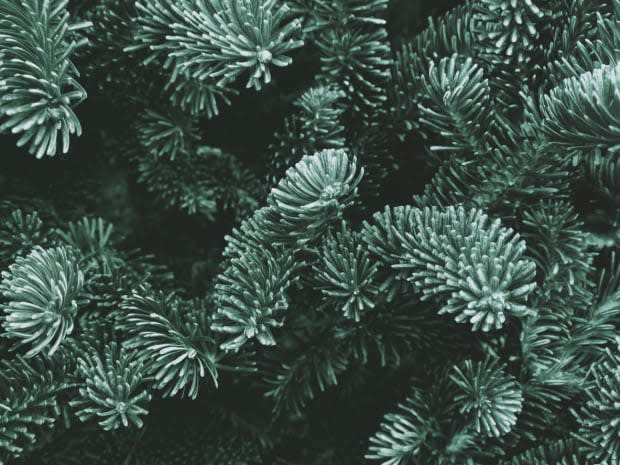
iStock
The Fraser fir tree is always a popular choice because of its appealing blue-green color and the fact that it holds ornaments well with the stiff branches. You can typically cut your own from tree farms in the mountains of North Carolina, the Virginias, the upper Great Lakes and the Northeast. However, they are also available at a large number of retail locations that sell pre-cut trees.
Many people also enjoy the great needle retention that these trees have—meaning you won't have to spend as much time vacuuming up needles! The scent of the tree is also pleasant with a light pine smell. It's a tree that grows tall and narrow with enough gaps to allow for many little pockets to hold Christmas ornaments.
2. Douglas Fir
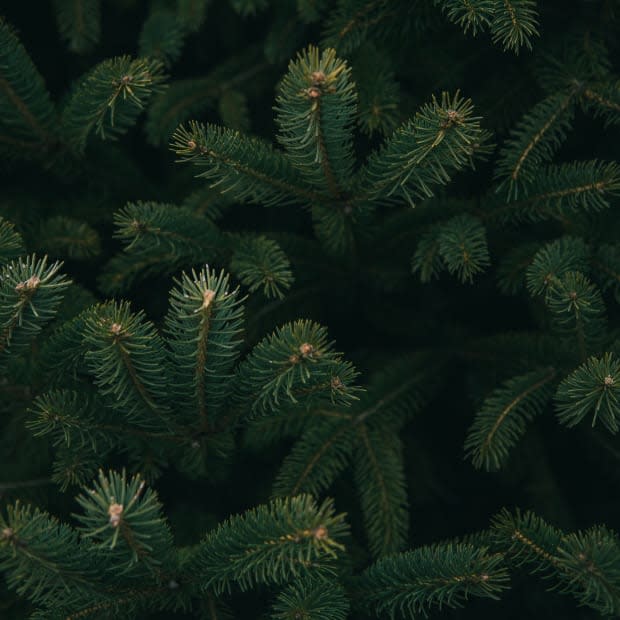
The traditional Douglas fir Christmas tree is very dense and has soft needles that give off a pleasant scent. It's another popular choice primarily because of the low price. All across the U.S., these trees are widely available in both retail spaces and grown in tree farms. Because the needles are soft and the branches are not as stiff as other varieties, it's best to hang lightweight ornaments to not weigh down the branches.
Related: 10 Magical Christmas Trees From Around The World
3. Concolor Fir

One of the most beloved features of the Concolor (also known as White fir) is its sweet fragrance that smells a lot like oranges. However, the blue-green color of the needles, the ability to hold ornaments well and the symmetrical shape are other significant reasons why this tree is so desirable. Plus, the needles are longer than most other Christmas tree varieties, which gives it a unique look!
4. Blue Spruce

A blue spruce Christmas tree (also known as green spruce, white spruce, Colorado spruce, or Colorado blue spruce) has always been a popular choice primarily because of its gorgeous color. The tree also has very stiff branches so it can hold heavy ornaments without a problem. One drawback, however, is that the needles are very sharp and don't have a long retention time. You can plan on having two to three weeks before the needles start to fall.
5. Scotch Pine
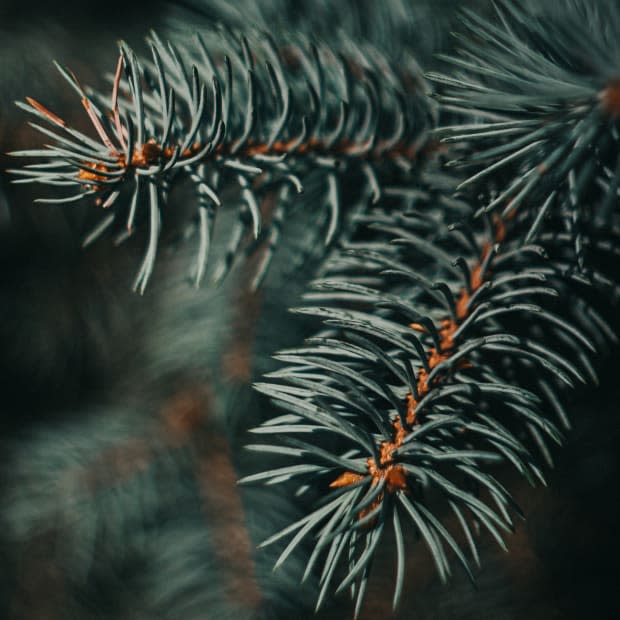
The Scotch pine was one of the first trees to be grown specifically as a Christmas tree in the Midwest. It is widely available and is the perfect traditional tree because it is dense, the branches are sturdy for holding ornaments and the deep green color is so appealing. On top of that, the needles hold their retention, which is a big plus as well. Since Scotch pine is widely available, it's another good budget-friendly choice.
Related: 10 Fun Facts About The National Christmas Tree
6. White Pine
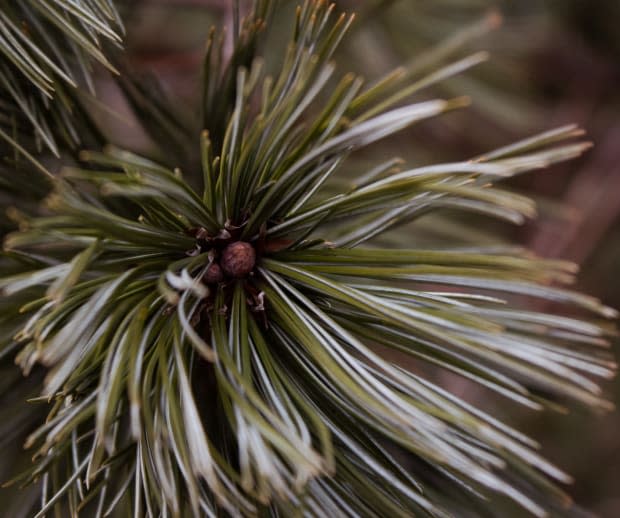
The look of a white pine tree is so pretty with its soft branches and needles. This tree's long needles have a medium density and are typically not strong enough for heavy ornaments, but they do have great needle retention. Just stick to lightweight ornaments and you won't have a problem!
7. Noble Fir

Noble fir trees typically have an impressive form, which makes them especially attractive as Christmas trees. The blue-green needles are short and hold up longer than most other trees. Plus, the branches are stiff, so heavier ornaments aren't a problem!
8. Balsam Fir

If you like the smell of Christmas, the Balsam fir should be your choice. It has a strong, desirable scent which is probably why it is one of the most popular choices for a Christmas tree. The needles are short and deep green in color. Plus, it's easy to hook your favorite ornaments to them without getting weighed down!
9. Nordmann Fir

If strong fragrance can be a hit or miss for you, you might want to go with a Nordmann fir—it is practically unscented. As a Christmas tree, this choice has been extremely popular in Europe and has been gaining popularity in the U.S. as well. It's a sturdy tree with great needle retention, which makes it a perfect tree to decorate. The color is pretty, too, as the deep green is enriched with a glossy sheen.
10. Grand Fir
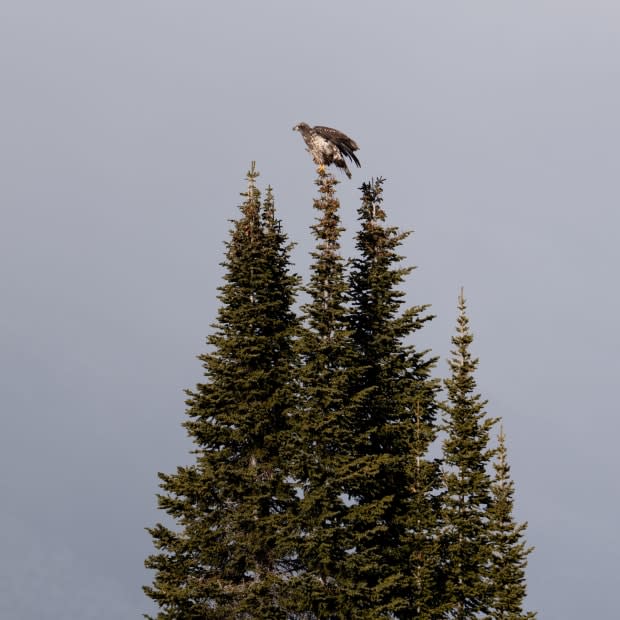
The Grand fir is another tree with glossy needles. They have a flatter look to them and are quite long. Because the Grand fir is related to the Concolor, it also has a very pleasant scent. The only significant drawback to this tree is that the needles begin to fall in two weeks. But if you only like to have your tree up for a short amount of time, this could be a good option.
Related: Holiday History: Why Do We Put Up and Decorate Trees? Here's the Christmas Tree's Origin!
11. Canaan Fir

Similar to the Balsam and Fraser fir trees, the Canaan fir also has a good structure, pleasant scent and rich color. The needles are short and somewhat soft. Some retail locations sell this tree, but it can be found primarily at tree farms in West Virginia, Michigan, Ohio and Pennsylvania.
12. Black Hills Spruce

The deep gray-green color of the Black Hills spruce makes it a popular choice for a Christmas tree. It is similar to the blue spruce, but the needles are shorter and softer. The branches are stiff and can hold ornaments well, but the retention of the needles will only last for two to three weeks. It can be found in retail locations primarily in northern states.
13. Leyland Cypress
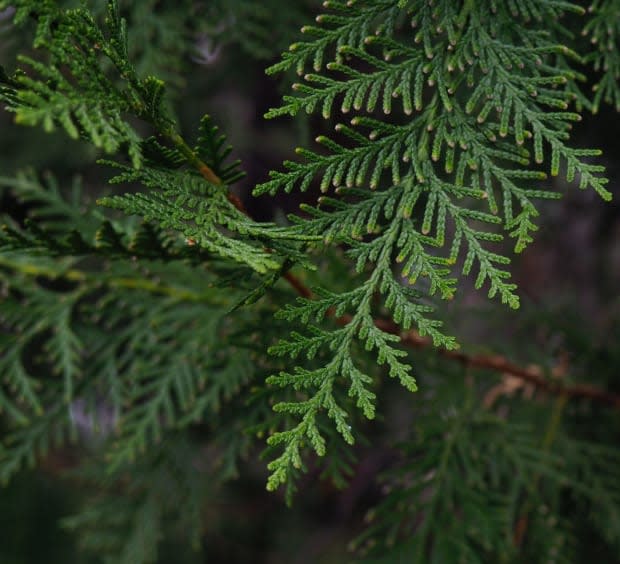
One tree that is mostly found in the southern states is the Leyland cypress. It has a wispy look that is more suitable for lightweight ornaments. The color is dark green and it has very little aroma. Since this tree is popular in the south and brought into warmer homes, it does require more watering to last throughout the season.
14. Korean Fir
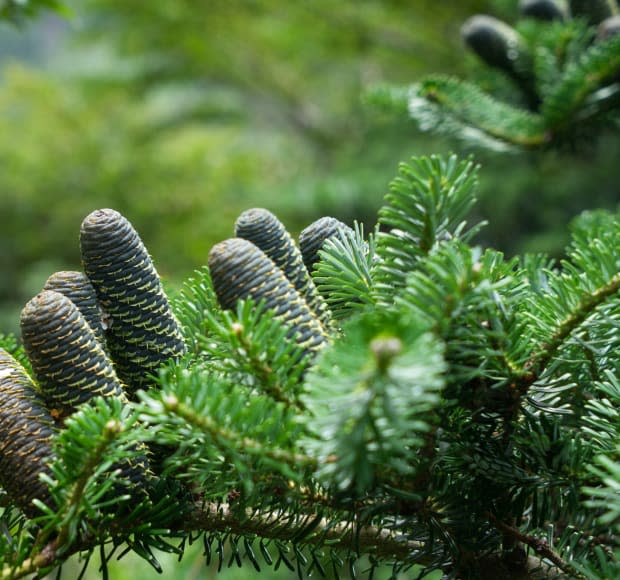
As you would expect from the name, the Korean fir is native to Asia. However, it grows very well in the U.S., too. It is most often found at tree farms in Michigan, Ohio and Pennsylvania. It has a look that is similar to a Fraser fir, which makes it another great Christmas tree option.
15. Monterey Pine
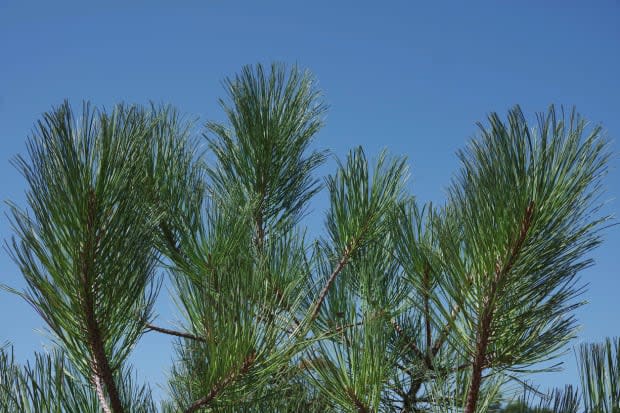
iStock
One Christmas tree that is very popular in the southwest is the Monterey pine. It is quite fragrant and has strong branches. You will not typically find this tree at retail locations—it is mainly available at tree farms in the southwest.
16. Virginia Pine

The Virginia pine is a smaller tree that is perfect for tighter spaces. The branches are sturdy and strong enough to hold heavy ornaments. When the tree is watered regularly, it retains its needles longer. And the scent is rich and piney!
Next up, festive Christmas porch decorations!
